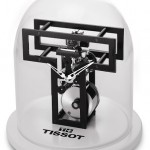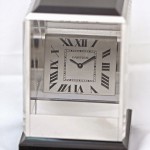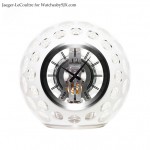Krzysztof Płonka Built the Great Astronomical Skeleton Clock From Scratch
Made in Poland with perpetual calendar and zodiac indicator.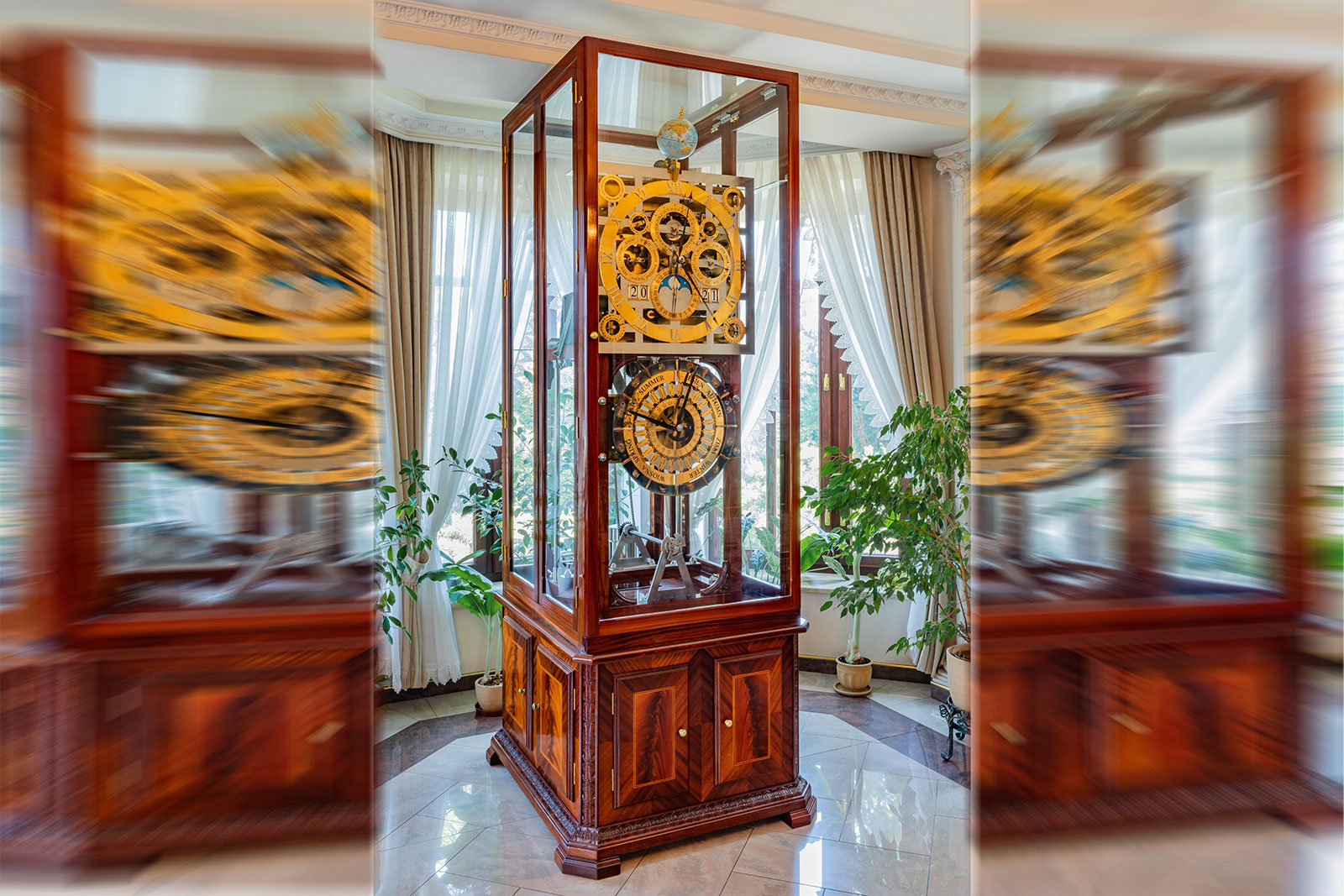
A mechanical engineer by trade, Krzysztof Płonka has been making elaborate clocks since the 1990s in his workshop in southern Poland, specialising in regulator-style standing clocks with astronomical complications.
One of his most complex creations is the Great Astronomical Skeleton Clock. Requiring a decade to complete – producing the components took six years and assembly a further four years – the clock is unique proposition that combines classical horology with more modern mechanics.
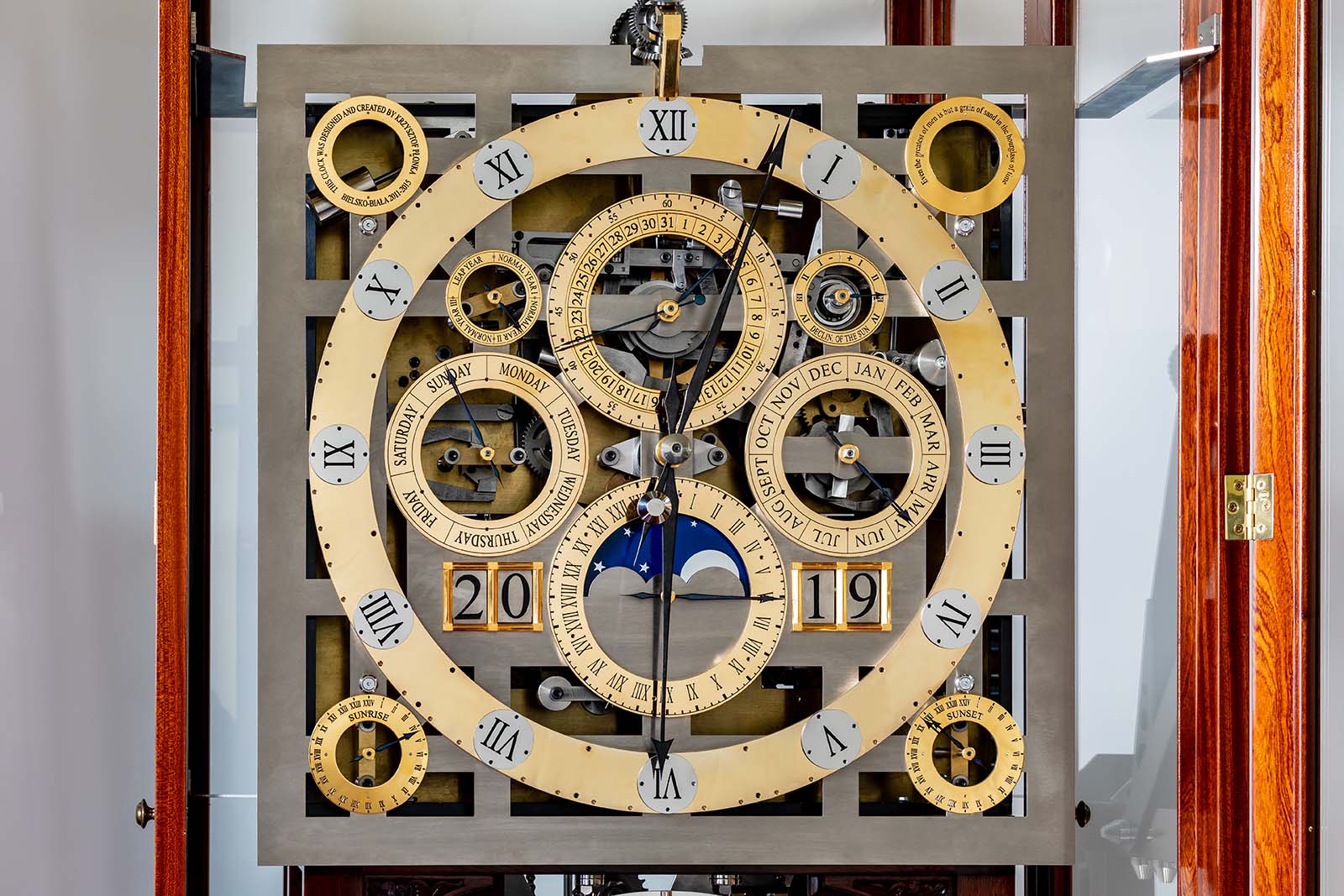
Initial thoughts
Large standing clocks are a niche of horology far from the mainstream of wristwatch collection. While wrist (and occasionally pocket) watches are well known to enthusiasts, the best clockmakers and their amazing works are mostly neglected.
The Great Astronomical Skeleton Clock is a good example of such a hidden horological gem. It’s both curious in construction and comprehensive in terms of complications, a combination that should interest horologists and engineers alike.
Built on a precision movement as the base, the clock features a complete perpetual calendar, sunrise and sunset times for a fixed location and even a sun declination indication. The mechanics are presented in a beautiful woodworked cabinet almost 3 m tall, with large glass panels generously showing the inner workings.
The clock is stark in its open working, with most of the mechanics within on show from all sides. The movement features both classical horological elements and general mechanical concepts, perhaps reflecting Mr Płonka’s engineering background.
The bicycle chain and sprocket transmission look a little out of place, but ultimately contributes to the authentic, hand-crafted feel of the timepiece. The finishing is clean but not overly lustrous, with components in brass, gilt, or steel that are either brushed or polished to a shine. Despite the complexity, the movement avoids decorative flourishes and instead has a restrained, utilitarian aesthetic.
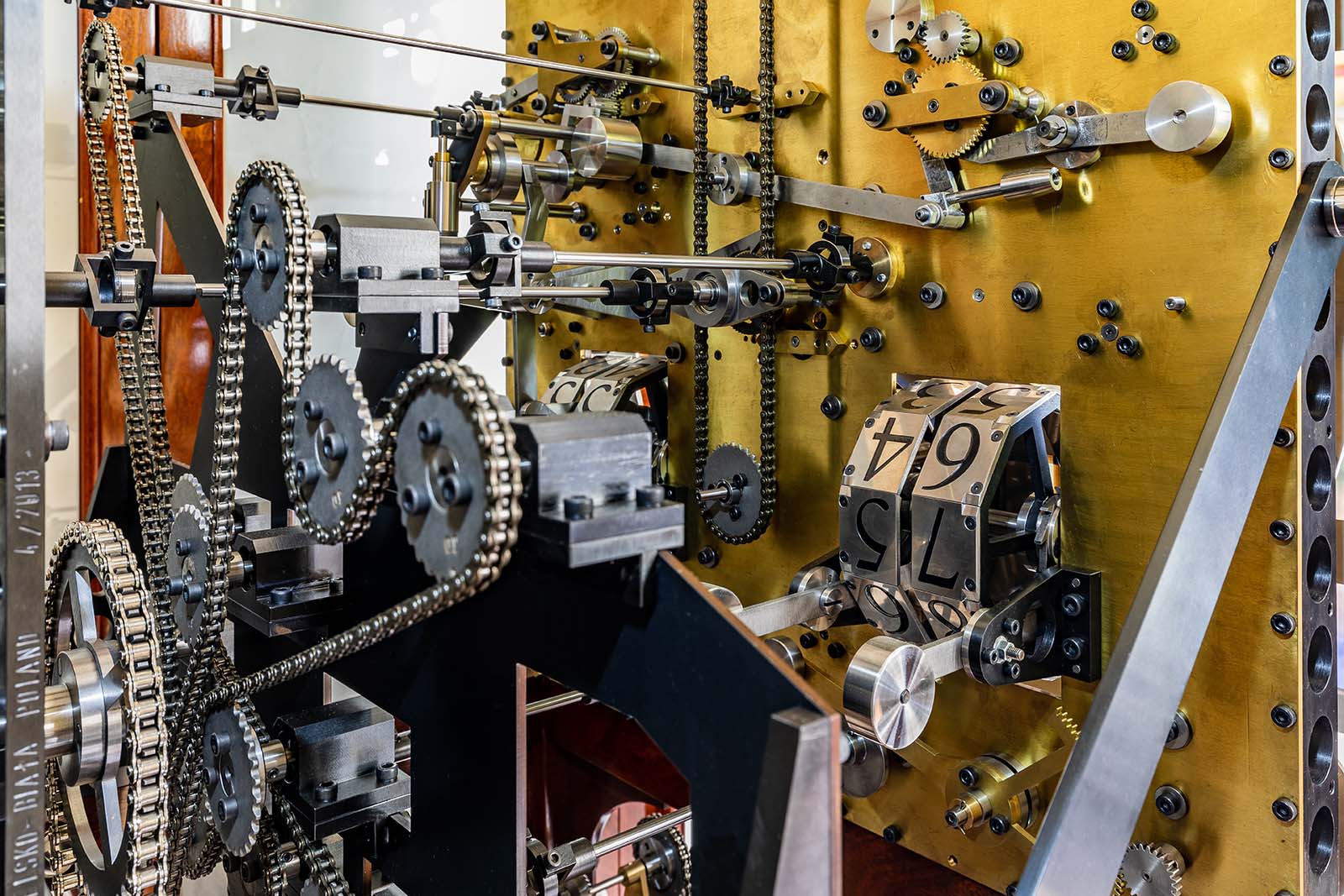
Arguably, the only thing missing in the movement is a moon phase with greater accuracy and a perpetual calendar with a greater period of perpetuity. Record-setting moon phase indicators and secular perpetual calendars have been installed to wristwatches despite the size constraints, so such specifications can be expected in a grand complication clock, given the large canvas for expression.
Multi complications
The time telling portion clock features a basic going train with a Graham-type escapement and temperature-compensating pendulum. The going train pivots on ball bearings while the pendulum is suspended from knife edge fixings, hallmarks of a classic precision regulator clock. When the weight-driven mechanism is wound, a Harrsion-style power maintaining system keeps the clock running.
The main clock face presents a complete perpetual calendar, with the date, day of the week, month, and four-digit year. The open-worked dial also features a classic moon phase, which is disappointingly not of the very accurate kind. Co-axial with the moon phase sits a 24-hour second time zone hand, while additional sub dials show the leap year cycle as well as sunrise and sunset times. The result is a dial densely packed with information.
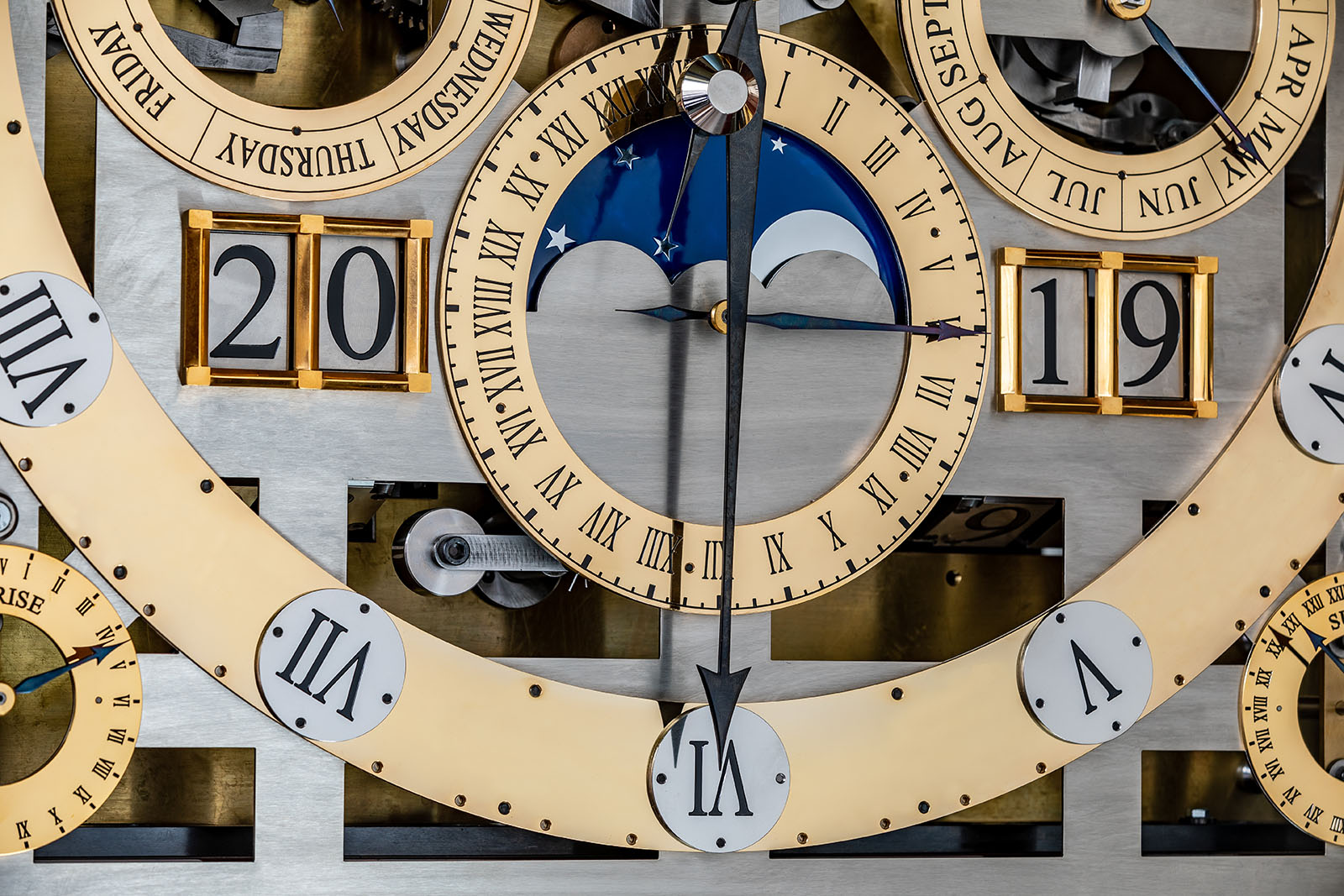
Underneath the main dial sits a secondary face, showing the seasons and the zodiac signs, which is driven by an annual gear that also controls the perpetual calendar indications.
The large size of the clock allowed the maker to depart from strictly classical watchmaking and employ worm gears for the adequate ratio transmissions. And at the very top of the clock is a revolving Earth globe that looks slightly out of place.
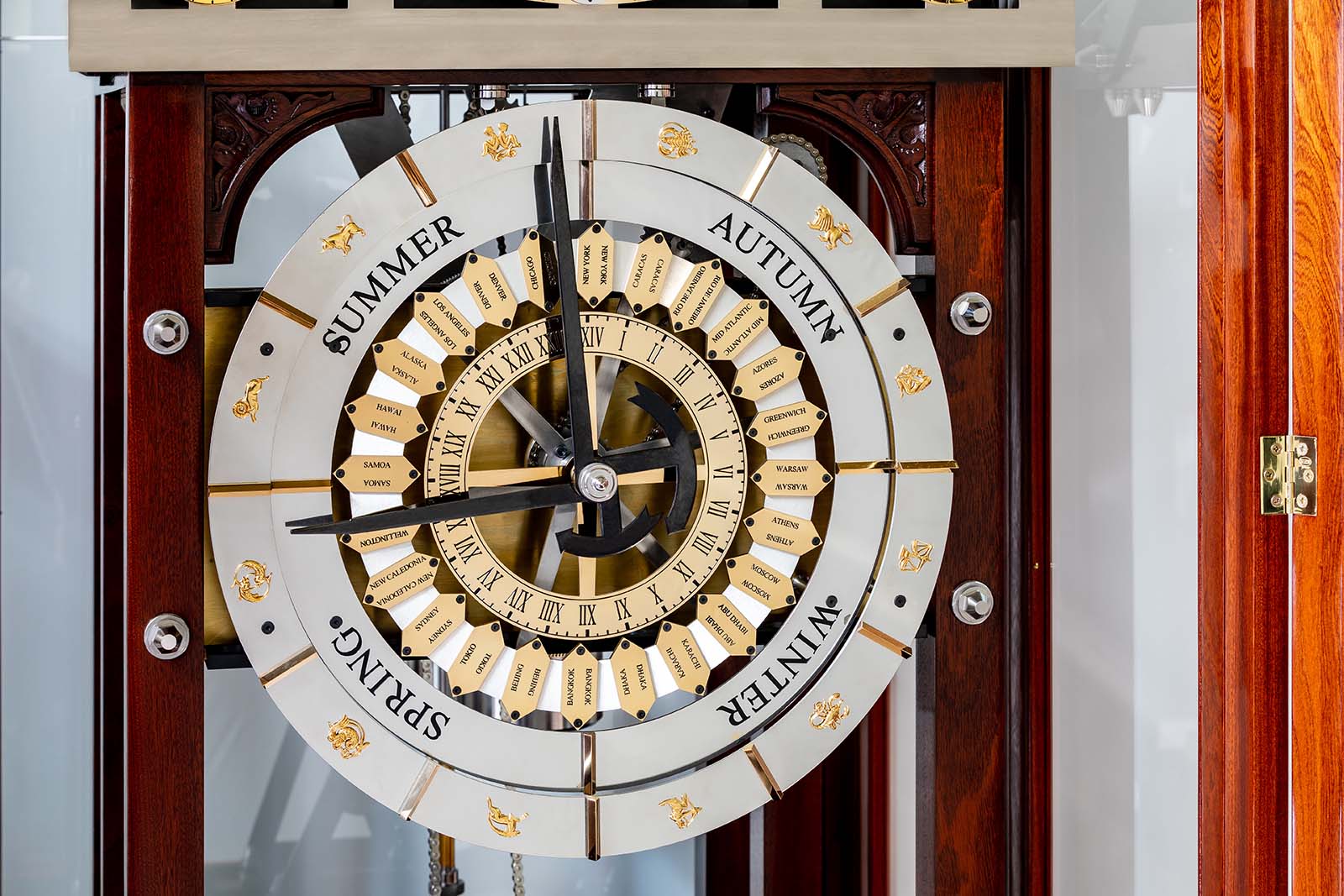
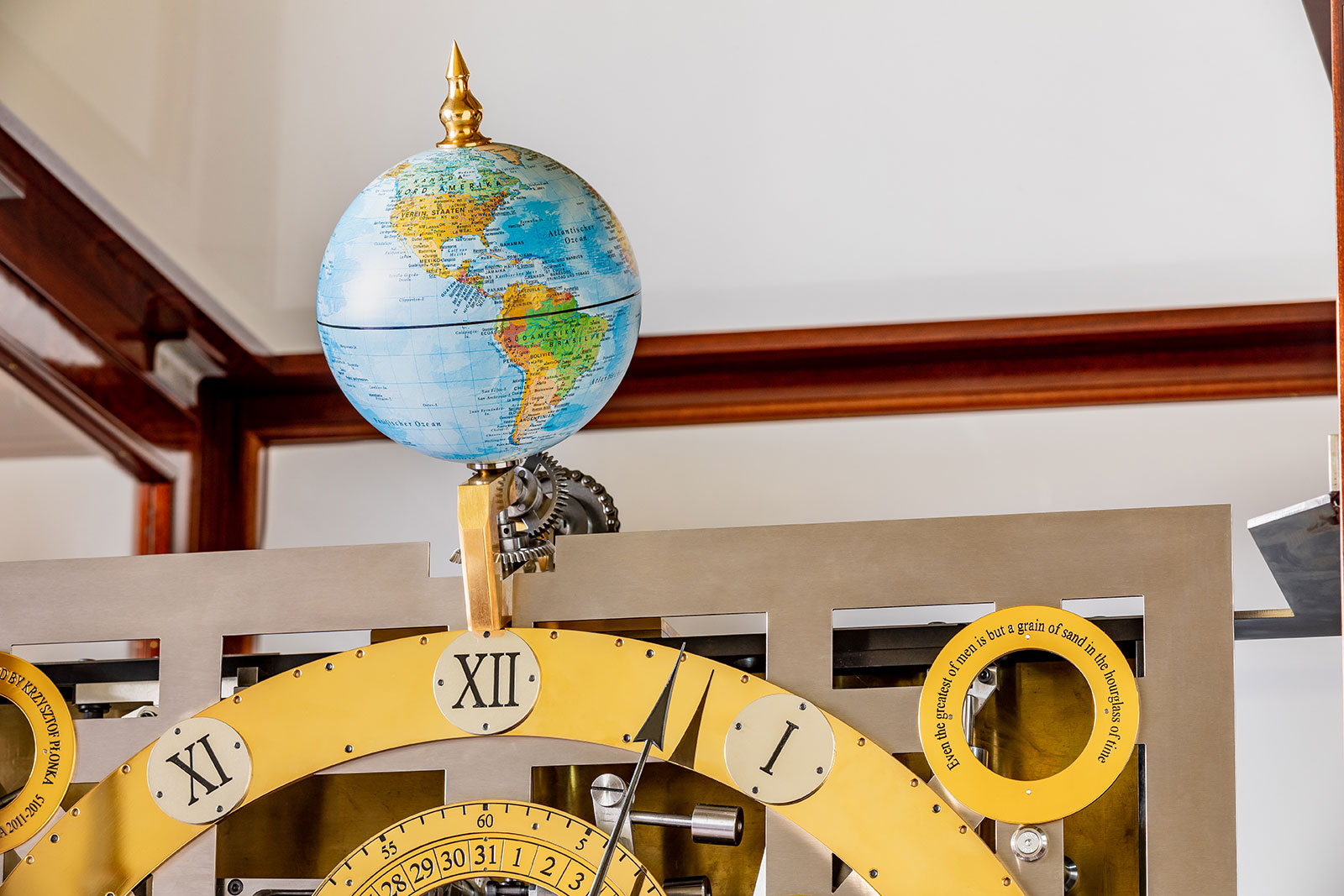
Many of the clock’s transmission systems are subtle; the inclusion of Gall chains, akin to those in a bicycle transmission, is certainly unusual even in clockmaking.
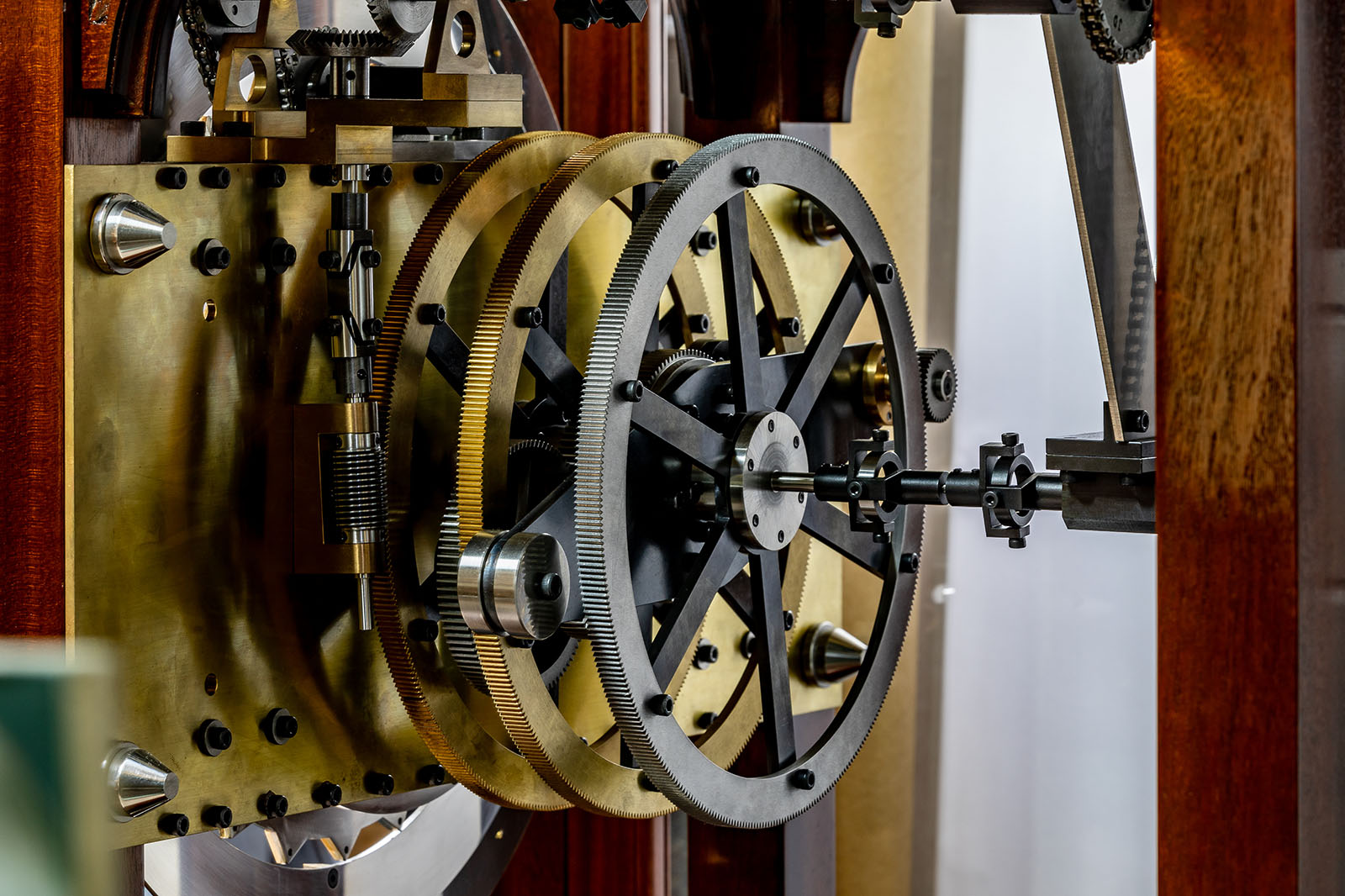
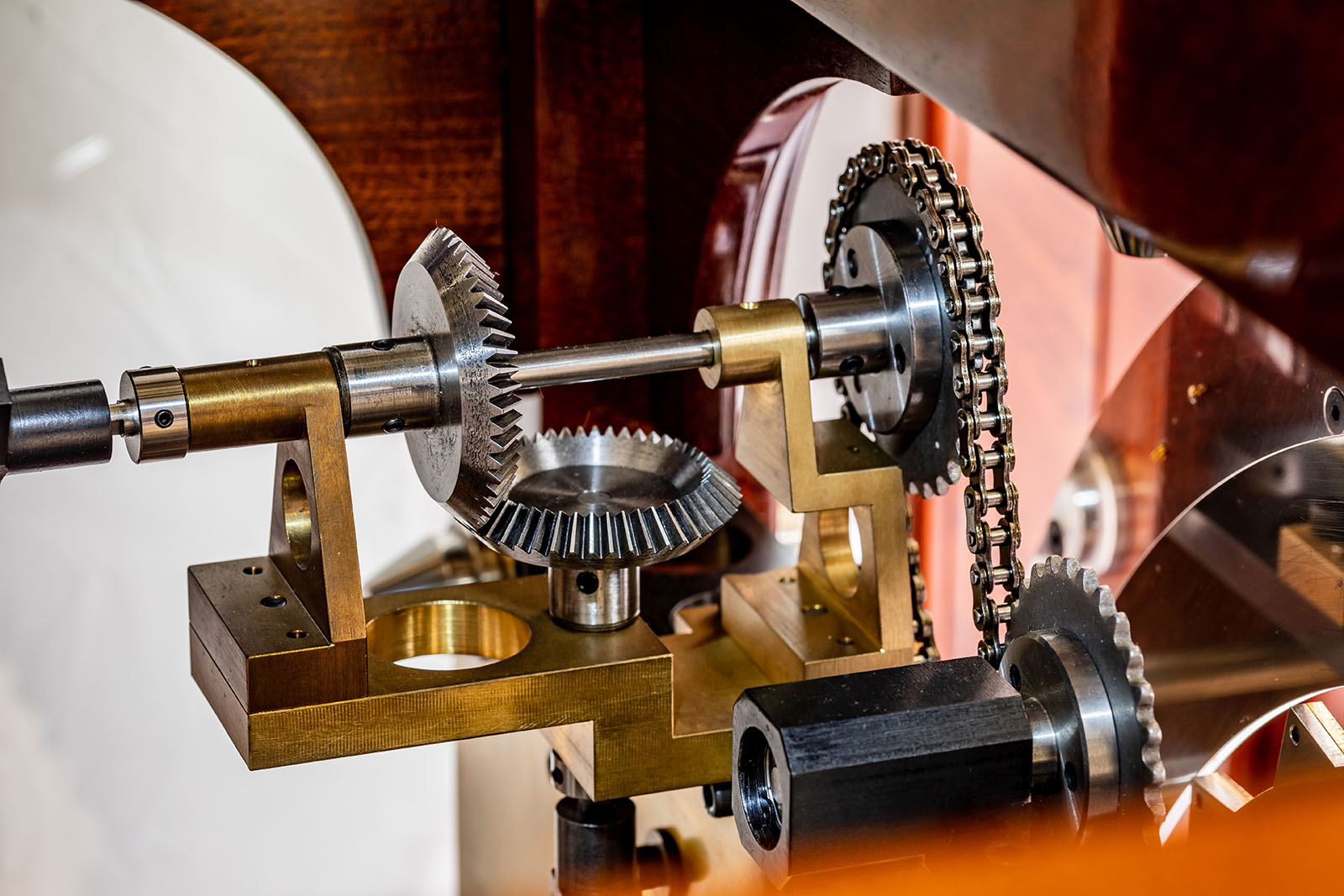
Key facts and price
Krzysztof Płonka Great Astronomical Skeleton Clock (2011-2015)
Dimensions: 2.70 m tall, with base 1.00 m by 1.15 m
Material: Case in mahogany wood, panelled in glass
Movement: Unnamed calibre
Functions: Hours, minutes, seconds, second time zone, perpetual calendar with four-digit year, moon phase; indicators for sign of the zodiac, seasons, sunrise, sunset, and sun declination
Winding: Key-wound
Power reserve: Five days
Limited edition: Unique piece
Availability: Direct from Krzysztof Płonka
Price: On request
For more, visit Zegaryplonka.pl.
Back to top.

